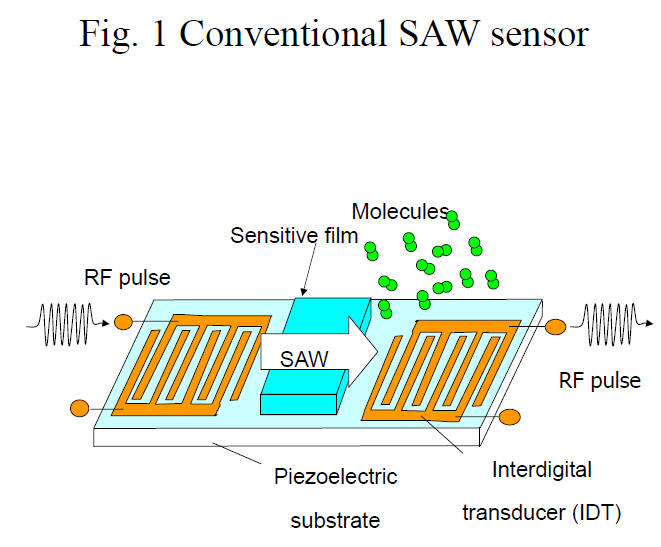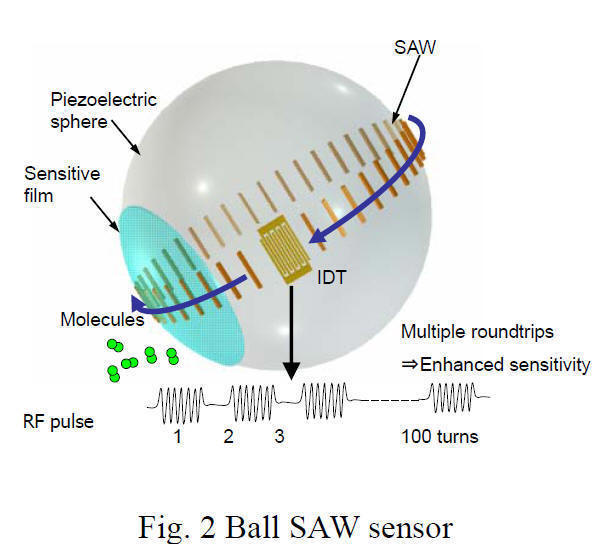|
@@
Fundamental Technology of Ball SAW Device for
Hydrogen Gas Sensor Established
The New Industry
Creation Hatchery Center research team of Tohoku University,
led by Professor Kazushi Yamanaka (Advanced materials
evaluation and sensing), has succeeded in a collaborative
effort with Toppan Printing Co., Ltd. and Yamatake
Corporation in prototyping the worldfs fastest wide-range
hydrogen gas sensor, with the support of US-based Ball
Semiconductor Inc.
The research focused upon a new phenomenon that was
discovered in relation to ultrasonic waves propagated on the
surface of spherical objects. The property of surface
acoustic waves (SAW) that make multiple roundtrips around
the sphere is specifically applied: in other words, the
amplitude and phase of SAW change while the waves pass
through a thin sensitive film with modified elasticity, due
to the adsorption of gas molecules.
This achievement was reported by 5 domestic newspapers; The
Daily Yomiuri(Jan.13), The Kahoku Shinpo(Jan.13),
Nikkan Kogyo Shinbun(Jan.17), Nikkei Business Daily
(Jan.18) and Kagaku Shinbun (Jan. 20).
@
Hydrogen sensors (Figure 1) using conventional SAW are able
to detect hydrogen in concentrations ranging from 0.1% to
100%. The distance of propagation is limited, however,
because flat substrates are used for the device, and
sensitivity decreases as compared to the field-effect
transistor (FET) sensor.
@

@
Based on the findings that SAW form naturally collimated
beams under certain conditions, are propagated through a
circular ring zone along the circumference of the sphere,
and make multiple roundtrips around it without attenuation,
the research team has developed a highly sensitive ball SAW
sensor (Figure 2) that can detect hydrogen concentration as
low as 0.001% applying this phenomenon.

In this experiment, increased signal strength through higher
precision device manufacture process and enhanced
compositional stability of the thin sensitive film adsorbing
hydrogen provided a rapid response time (1/50 vs.
conventional devices): four seconds at room temperature, and
two seconds at 130
C.
It is expected that the worldfs fastest wide-range hydrogen
sensor can be used in practical application as a flow
control valve for hydrogen stations. The team has also
developed a spherical SAW sensing/assessing device and
sensor module for other purposes.
As this sensor can be applied to a wide range such as gas,
liquid, temperature, and pressure, it may create a new
market in various fields including: sensors (hydrogen, CO,
pressure, etc.) expected to play an important role in the
safety management and the control of fuel cells;
environmental sensors for hormone disrupters, gases, odor,
etc.; and bio-sensors for protein chips.
The evaluation device and sensor module developed during
this project will be provided to universities, companies,
and research organizations both domestically and abroad to
call for far-reaching collaboration.
@
Back
@
Contact:
Prof. Kazushi Yamanaka
New Industry Creation Hatchery Center (NICHe)
Tohoku University
Tel:
+81-22-795-7357

@
@
|

